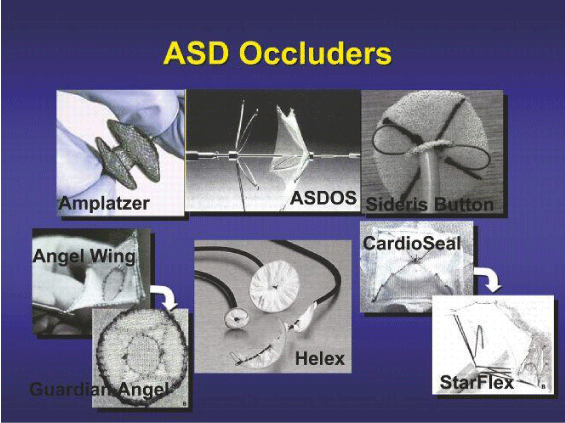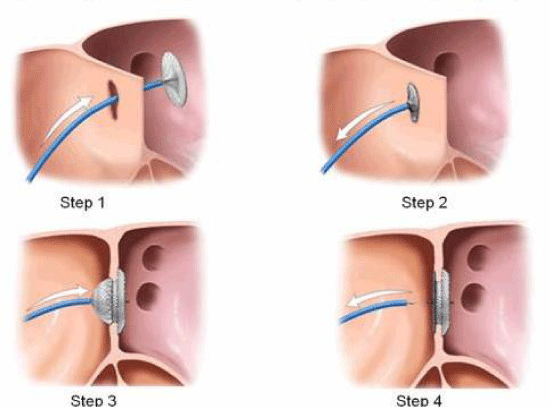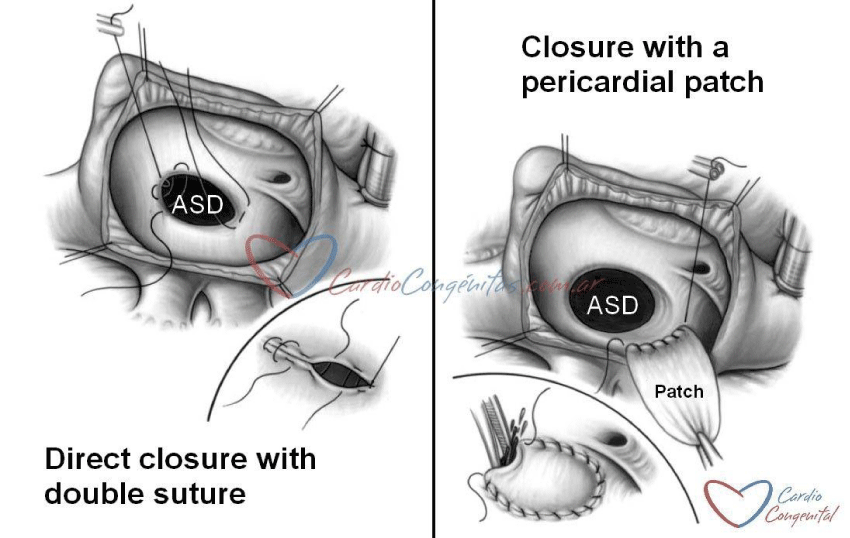Journal of Cardiovascular Medicine and Cardiology
Surgical management of embolised occlude devices and its complications-Single centre experience of ten years at Grant Medical College, Mumbai, Maharashtra
Suraj Wasudeo Nagre1* and Krishnarao N Bhosle2
2Professor and Head of Department CVTS, Grant Medical College, Mumbai, India
Cite this as
Suraj WN, Krishnarao NB(2018) Surgical management of embolised occlude devices and its complications- Single centre experience of ten years at Grant Medical College, Mumbai, Maharashtra. J Cardiovasc Med Cardiol 5(1): 010-015. DOI: 10.17352/2455-2976.000061Introduction: In this study, we have analyzed our experience in surgical management of device embolization after trans-catheter closure of atrial septal defect [ASD] and its complications.
Method: This study is a review of 27 patients out of 300 patients who underwent transcatheter device closure of ASD between august 2007 to august 2017, in whom the device embellished and surgery was required for its retrieval and ASD closure. Risk factors for device embolization, its management and subsequent prognosis were discussed.
Results: Emergency device retrieval with pericardial patch closure of ASD on cardiopulmonary bypass was done in each case. Most common site for device embolization was right atrium. Other site of embolization are right ventricle, left atrium and even in pulmonary artery. More than half patients had inadequate rims, 3 patients had developed pericardial tamponade post cardiac perforation. Three patients developed femoral artery thrombosis at the catheter puncture site for which embolectomy was required. One patient developed transient ischaemic attack on postoperative day one. All other patients recovered well.
Conclusion: Closure of ostium secondum atrial septal defects by percutaneous occlude devices has significant advantages, however device embolization continues to be a major complication with chances of added morbidity of vascular complications, stroke and transient ischaemic attacks. Patient selection is of as much importance as device selection to prevent patient –device mismatch. After device embolization, the device can be retrieved and the septal defect can still be closed surgically with good success and minimal morbidity if acted upon on an urgent basis.
Introduction
Atrial septal defect is usually an asymptomatic disease. However, children with atrial septal defects are at increased risk for several complications, such as endocarditis (if associated mitral valve insufficiency is present) and respiratory tract infections. Any individual with an atrial level shunt is at risk for a paradoxical embolus from a venous thrombus, but in children, this is exceedingly rare, unless there is an underlying hypercoagulable state [1]. Children with clinically significant and untreated atrial septal defects are at risk for various cardiac complications, including CHF, pulmonary hypertension, and arrhythmias treated with diuretics, afterload reduction, and digoxin. Medical therapy is of no benefit in children with asymptomatic atrial septal defects (ASDs) [2].
With the exception of ostium secundum types, atrial septal defects are structural defects that do not spontaneously close. Occasionally, small primum ASDs may not require closure, but due to their association with mitral valve abnormalities, they may be closed at the time of mitral valve repair, if such a repair is indicated. An ostium secundum atrial septal defect that measures 6 mm in diameter or smaller in the patient’s first year of life is likely to spontaneously close. Definitive therapy for an atrial septal defect has historically been limited to surgical closure. However, with the advent of transcatheter techniques, many children undergo successful treatment in the cardiac catheterization laboratory [3].
Material and Method
This study is a review of 27 patients out of the 300 patients who underwent transcatheter closure of ostium secundum ASD between august 2007 to august 2017 in whom the device embolised and surgery was required for its retrieval and ASD closure. All the patients are in age group of 6 to 44 years with 16 female and 11 male. Majority of patients out of 27 were detected with device embolisation on the same day of device closure of ASD in evening round of 2 D echo. Risk factors for device embolization, its management and subsequent prognosis were discussed.
Results
Emergency operation was done in all cases via midline sternotomy. Under cardiopulmonary bypass the device was retrieved followed by pericardial patch closure of ASD. Most common sites for device embolization was shown in table 1.
Three patients had developed pericardial tamponade post cardiac perforation, three patients developed femoral artery thrombosis at the catheter puncture site for which embolectomy was required and one patient developed transient ischaemic attack on postoperative day one. All other patients recovered well (Table 2).
More than half patients had inadequate rims more commonly IVC rim, rest of patients has size mismatch, inexperienced operator and small left atrium as reason for device embolization (Table 3).
Discussion
Transcatheter approaches to atrial septal defect closure are well accepted in the pediatric population. Various types of devices available but the maximum size available is less than 40 mm (Figure 1). Secundum atrial septal defects are currently the only subtype of atrial septal defect that are amenable to this approach [4].
The preference for timing of catheter-based closure is institution / interventionalist specific, but generally around age 4-6 years with a known, hemodyanmically significant defect [5]. Benefits of the transcatheter approach include its minimal invasiveness, the lack of median sternotomy, the avoidance of cardiopulmonary bypass, and the relatively quick recovery time (Figure 2). Potential drawbacks and concerns include residual shunting around the device, embolization during placement requiring surgical intervention, lack of adequate septal rims to properly seat the device and the need for specific technical expertise and equipment [6].
Complications of percutaneous ASD closure are air embolism, vascular trauma resulting from large sheaths, device embolization, clot embolization through the aortic valve, occlusion of pulmonary or systemic venous return, perforation of the atrial septum, aortic perforation, infective endocarditis, atrial arrhythmia, device malposition necessitating removal, delayed breakdown of device. Among these, device embolization is a potential life-threatening complication requiring immediate removal via percutaneous or surgical intervention [7]. Although the reported incidence is 0.01% to 0.55%, it would be higher in less-experienced operators (Figure 3).
The most common surgical approach to the defect is primary repair with suture closure or with patch repair (generally with glutaraldehyde treated autologous pericardium, Gore Tex patch or fabric made of polyester fiber) (Figure 4). Candidates for surgery are children with clinically significant left-to-right shunting and whose defects are not amneble for device closure. The prognosis for a child with an atrial septal defect is good; the rate of surgical mortality is less than 1% [8].
Newer, minimally invasive surgical techniques like minithoracotomy, ministernotomy are developed. These improve cosmetic appearances and decrease hospital stays. These techniques are ideally suited for simple closure of a secundum atrial septal defect [9]. Overall however, the medium- to long-term outcomes of ASD closure, either surgically or percutaneously, appear very good [10]. In our study we managed the ASD device embolized patients as an emergency so no mortality with minimum morbidity. From our study it looks that if proper guidelines for ASD device closure are followed then its complications will be less. Morbidity to patient, cardiologist and cardiac surgeon will be less.
Conclusion
Closure of ostium secondum atrial septal defects by percutaneous occlude devices has significant advantages, however device embolization continues to be a major complication with chances of added morbidity of vascular complications, stroke and transient ischaemic attacks. Patient selection is of as much importance as device selection to prevent patient –device mismatch. After device embolization, the device can be retrieved and the septal defect can still be closed surgically with good success and minimal morbidity if acted upon on an urgent basis.
- Gittenberger-de Groot AC, Moulaert AJ, Hitchcock JF (1980) Histology of the persistent ductus arteriosus in cases of congenital rubella. Circulation 62: 183–186. Link: https://goo.gl/FGbvDK
- Nagre SW (2016) Atrial Septal Defect: Management Approach in Children. Ann Woman Child Health 2: 3-4. Link: https://goo.gl/p4XQ91
- Pegoli W (2005) Pericardium and great vessels. In: Oldham KT, Colombiani PM, editors. Principles and Practice of Pediatric Surgery. 4th ed. Philadelphia, PA: Lippincott Williams & Wilkins 1019
- Nagre SW (2016) Management of Patent Ductous Arteriosus – Short Review. Annals of Woman and Child Health 2: Link: https://goo.gl/LTcjWrs
- Miao CY, Zuberbuhler JS, Zuberbuhler JR (1990) Prevalence of congenital cardiac anomalies at high altitude. J Am Coll Cardiol 12: 224–228. Link: https://goo.gl/B9nvfg
- Nagre SW, Nagre MS (2015) Observational Study of Surgical Closure of Ostium Primum Atrial Septal Defect in Thirty Paediatric Patients. Ann Woman Child Health 1: 1-4. Link: https://goo.gl/jV9Vga
- Nora JJ, Nora AH (1976) Recurrence risks in children having one parent with a congenital heart disease. Circulation 53: 701–702. Link: https://goo.gl/Tuo3bm
- Nagre SW (2017) Atrial Septal Defect – Forgotten Treatment Guidelines. Acute Chronic Diss 1: e101. Link: https://goo.gl/ydMSwu
- Pezzati M, Vangi V, Biagiotti R, Bertini G, Cianciulli D, et al. (1999) Effects of indomethacin and ibuprofen on mesenteric and renal blood flow in preterm infants with patent ductusarteriosus. J Pediatr 135: 733–738. Link: https://goo.gl/TWfXQH
- Nagre SW (2015) Surgical removal of embolised atrial septal defect device from pulmonary artery. J Thorac Cardiovasc Surg 150: e55-57. Link: https://goo.gl/xzHr7Js

Article Alerts
Subscribe to our articles alerts and stay tuned.
 This work is licensed under a Creative Commons Attribution 4.0 International License.
This work is licensed under a Creative Commons Attribution 4.0 International License.




 Save to Mendeley
Save to Mendeley
